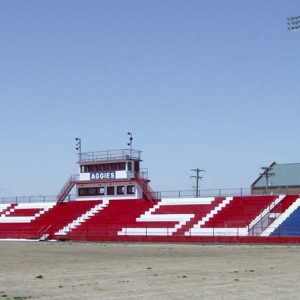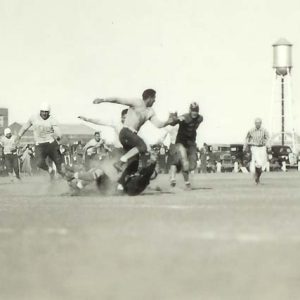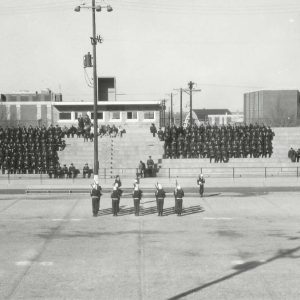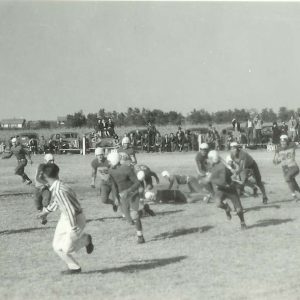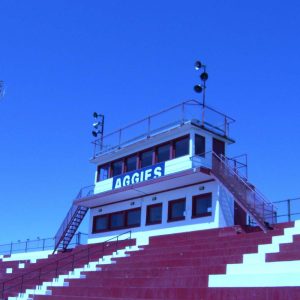Carl Wooten Field
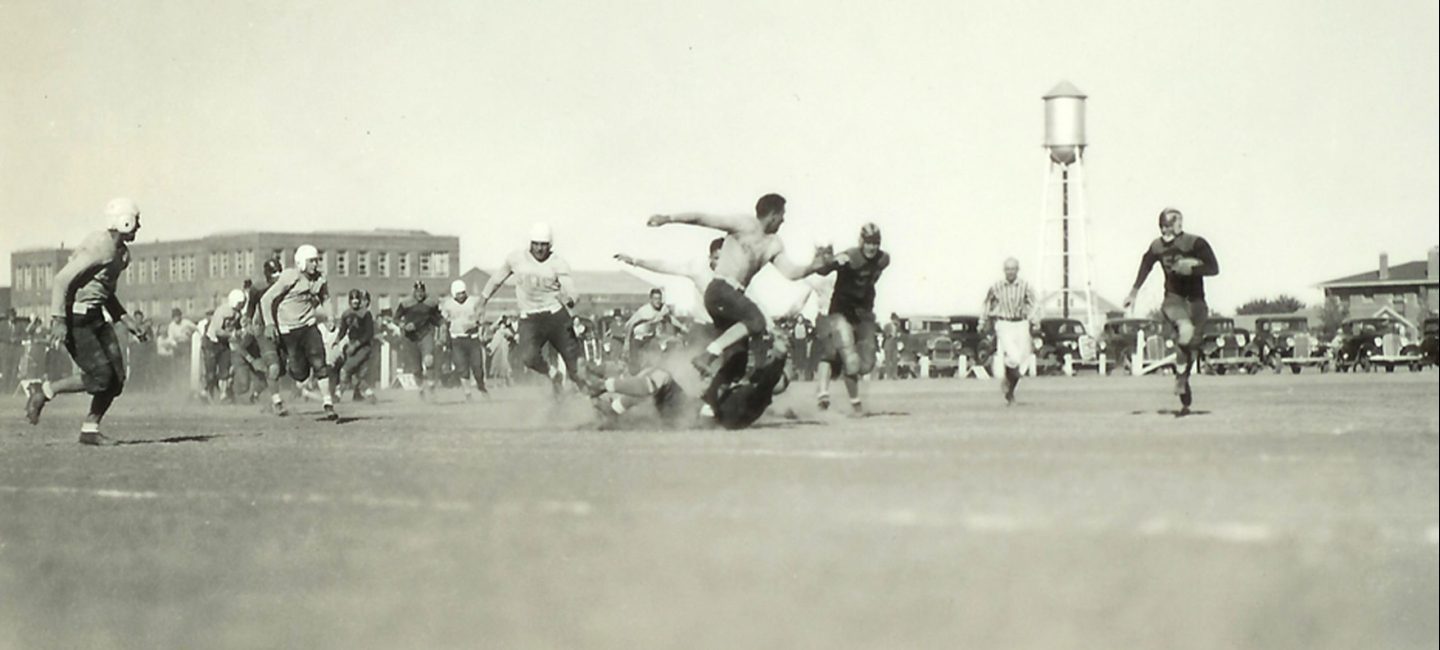
Football started on the Panhandle Agricultural Institute campus in 1919 with few players who had ever seen a game played. The first playing field was a patch of rocky, weed-filled, uneven ground that measured 120 yards by 54 yards on the south side of the campus. By the 1930’s, Panhandle Agricultural and Mechanical College (PAMC) charged an admission fee to the football games in order to paint the fence and railing that surrounded the field—still a “bed of goat heads…a few scraggly weeds, and sandburs.” In 1934, a new fence, temporary wooden bleachers, and goal posts had been erected and painted white. Still, nothing had been done to smooth out the rough playing field itself. Before the end of the 1930’s, Texas County Commissioner Jim Rown brought forty loads of dirt to the playing field; student labor leveled the playing field, dug up weeds, and planted grass all by hand; pipes set in cement replaced flimsy wooden goal posts.
During World War II, the college suspended the football program as only a handful of men attended PAMC in those days; in one semester during the war, only two males enrolled. To make use of the gridiron, the college farm grazed sheep there and even planted wheat during the 1945 growing season. With the end of the war and the beginning of the 1946 season, football returned to campus with eighteen men on the roster, but the playing field was still a mess. Maintenance crews reworked the soil, but planted no grass. The Aggies won the 1946 Homecoming game because the opponent from Conners State never showed up. Perhaps rumors of the awful condition of the field prevented them from making the trip to the Panhandle. Finally, the field was given a covering of real turf in 1947. The Des Moines Steel Company of Dallas, Texas, began building permanent stadium seating for 1,000 fans on a steel structure on the south side of the field in 1948. A year later, new temporary bleacher seats to accommodate 2,000 fans were built on the north side of the field. Eventually, a running track was laid around the field.
The stadium facility itself is named for Coach Carl Wooten who was born in Rice, Texas, in 1897 and came with his family to Oklahoma in 1905. Wooten arrived on the PAMC campus for the 1935 season which ended with a 3-3-1 record. He coached football, basketball, and baseball. One of the first things that he did was raise the football game admission price to $2.50 so that PAMC could purchase uniforms, helmets, shoes, pads, towels, and soap for the players. Before this, players purchased, maintained, and washed their own uniforms. In 1937, Wooten arranged for PAMC to play football in the New Mexico Conference. During the absence of the football program during WWII, he taught industrial arts classes. He resigned in 1944 to become the superintendent of schools in Texhoma, Oklahoma; however, he did return to the PAMC campus in 1949 when he assumed the responsibility of managing the student union and cafeteria. He and his wife served as dorm parents for Earle Hall, where the majority of football players resided. Mr. Wooten retired from PAMC in 1963. On November 8, 1969, at a home Aggie football game, Wooten received a plaque for his perfect attendance at all home Aggie football games for the last 35 years. In 1973, he was inducted in the Oklahoma Athletic Hall of Fame in Bartlesville.
At the spring 1973 alumni banquet, plans were announced to name the Oklahoma Panhandle State College of Agricultural and Applied Science (PSC) football field Carl Wooten Field. Before the beginning of the 1973 football season, alumni and fans raised $15,000 to purchase new lights and a speaker system, to remodel the north gate entryway, and to purchase a name plaque. On September 8, 1973, the stadium was officially dedicated to honor Mr. Wooten.
